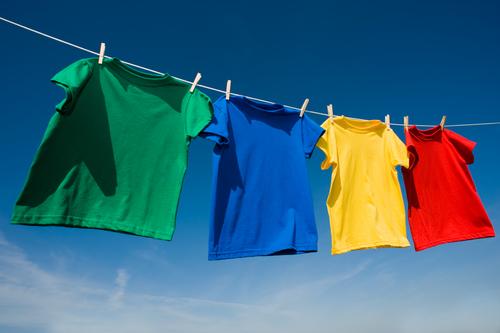If the Earth’s valuable resources are to be preserved and our environment is to be saved from pollutants and hazardous chemicals then we are all going to have to get more aware of how our lifestyles impact our planet. One area of our lives which is coming under the spotlight is fashion. Intensive cultivation and manufacturing processes are having a detrimental effect on the environment and so many of us are looking for eco-friendly solutions when it comes to our clothes.
Eco-Friendly Fashion
When you think of earth friendly clothing you are probably considering organic cotton or fabrics which have been naturally dyed. However, when it comes to the carbon footprint of clothing, nothing has a more negative effect than our need to clean. On top of the thousands of miles a garment might travel to reach the store and the energy and chemicals it took to make it, it is our repeated cleaning of that garment which has the greatest impact on its carbon footprint and there is nothing that organic cotton in itself can do to change that fact.
The Alternative
Recently scientific advances have seen the appearance of self-cleaning fabrics. The first example appeared in 2002 and initially research focussed on cotton and wool. The latest material to be worked on is a cashmere which cleans itself using nothing but light. Much cashmere is dry cleaned using energy intensive processes and potentially toxic chemicals but the new cashmere need never pay a trip the cleaners.
The process developed at the University of Hong Kong works by coating the cashmere with nano-sized thin layers of anatase titanium dioxide. The layers are invisible and do not resist stains but rather make them disappear. If the cashmere becomes dirty or stained, it can be exposed to light for 24 hours. A chemical reaction is triggered by the light causing the staining or any bacteria that have formed to completely go away.
The Future
Research is continuing to ensure that the coating itself is safe but we are close to being able to fashion clothes using cashmere which has been treated in this way. Tests have revealed the coating to be durable and so the cleaning process is expected to last as long as the fibres in the clothes remain intact.
You are probably wondering about the cost implications. After all cost plays a major role in our fashion choices and many people rightly or wrongly feel that they cannot afford to be environmentally aware. The good news is that the treatment should only add around 1% to the cost of manufacturing a garment and even if the cost were higher it would be counter balanced by the savings on cleaning. If similar results can be achieved with other more every day fabrics we may have a fashion revolution on our hands.
We can expect to see more of this type of technology in the future for both luxury fibres and every day garments because it could help save our planet and it will certainly save us from our cleaning chores. Add to this the long term cost savings from not having to wash our clothes and this idea seems like a real winner!
Sally Stacey is a professional writer and fashion retailer with a keen interest in technological develoments for textiles.





